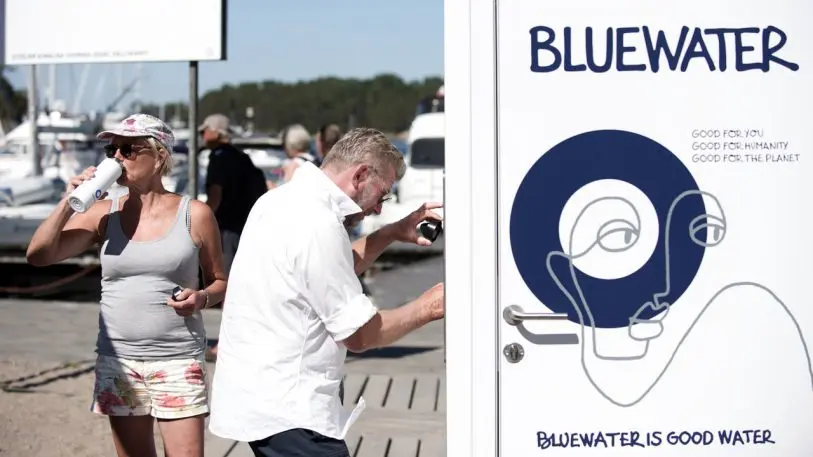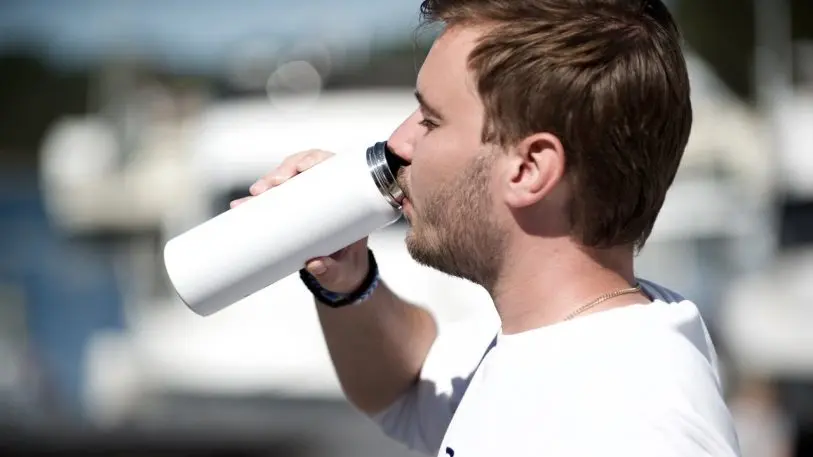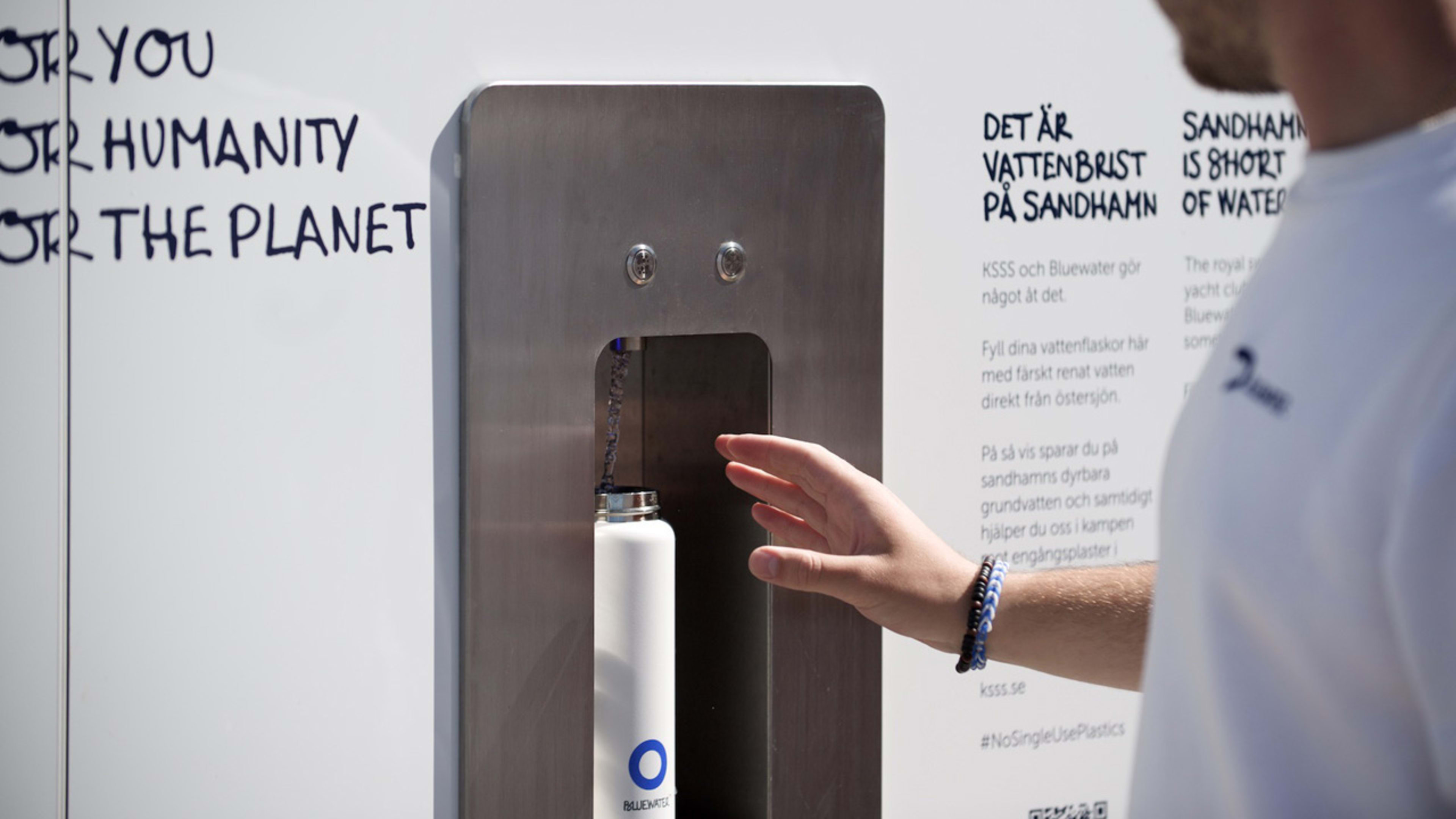The tiny island of Sandhamn lies around 30 miles east of mainland Sweden in the Baltic Sea, at the edge of the Stockholm Archipelago. Though the island is home to only around 90 full-time residents, 600,000 vacationers flock to the tiny outpost, which some call the “Swedish Hamptons,” each year. And that influx puts an unbearable strain on the island’s water systems.
Sandhamn’s natural aquifer reserves can only handle the basics: delivering water to year-round residents and the island’s restaurants and hotels. To stay hydrated, visitors have traditionally had to opt for bottled water.

Through a partnership with the water technology company Bluewater, though, that’s changing. Bluewater develops proprietary water-purification systems that use the process of reverse osmosis, a relatively common water purification tactic in which a membrane removes ions, molecules, and large pollution particles from water. Bluewater has installed four of its purifiers along the Sandhamn coast, where they extract water from the Baltic Sea, run it through the network of filters, and produce up to 30,000 liters of drinking water per day for newly arrived tourists. The “reject water” leftover from the purification is funneled to the utilities, re-filtered, and used for purposes like toilet flushing, so it does not contribute to ocean contamination. Each Bluewater purifier links up to a network of three cisterns from which purified water is distributed to a number of small hydration stations along the Sandhamn marina. When tourists arrive to Sandhamn, often via cruise ship or smaller boats, they encounter the drinking water stations as soon as they disembark.

Converting brackish ocean water into clean drinking water is no simple task, and Bluewater had to undergo rigorous testing through a pilot last year to ensure that its technology could deliver the level of purification required to render the water potable. Now that it’s been thoroughly vetted and certified, this “water microgrid” system, as Bluewater CEO Anders Jacobson calls it, is proving necessary for the small island of Sandhamn, as Sweden this year has faced record temperatures and drought-like conditions that have exacerbated the need for quality water throughout the country’s islands. “Sandhamn has become the go-to place for people in the archipelago, because they know that here they can get water,” Jacobson says. The systems require electricity to push the water through the filter, so there are other environmental concerns, but on a small island with little water, residents need to consider the tradeoffs.

Bluewater’s system also has broader applications for any community struggling with access to clean water. “We’re in a vicious cycle now where we have a problem with contamination or lack of access to drinking water globally,” Jacobson says. “But the solution for many consumers today is they go out and buy bottled water instead.” That, he says, perpetuates the use of plastics, which often end up in landfill or in bodies of water, where they further contribute to contamination. “What we try to do is tackle it by saying if you can trust your tap water or water source, you don’t have to buy bottled water, and you can contribute to more sustainable water use.”

In Flint, Michigan, where lead-contaminated local water led to disease outbreaks and exposed governmental negligence that’s yet to be righted, Bluewater donated several purifier systems to community spaces and shelters in 2016 to help mitigate water quality issues and drive down dependence on bottled water. “Our technology removes lead, so we were able to provide a solution that took away what was killing people in Flint in the municipal water supply,” Jacobson says. “We know that it works, but we tested it several times before introducing it to be 100% sure it would work for Flint.” The company also donated purifiers to Cape Town, South Africa, last December, when the country’s drought and water shortage were reaching a breaking point, and is looking into expanding to parts of California, where drought circumstances are pervasive.

“We’ll just continue to see this stress on the water supply because we’ve stressed the planet,” Jacobson says. “And when there’s stress, people look for alternative supplies. We did that with the Baltic Sea, where we took water that was otherwise not possible to drink and turned it into drinkable water; we did the same in Cape Town, were we purified well-water.” Finding these other solutions that exist in nature but have not been able to be tapped for human consumption, Jacobson says, will be necessary to ensure that single-use plastic water bottles do not become the only solution for water-stressed communities.
Recognize your brand’s excellence by applying to this year’s Brands That Matter Awards before the early-rate deadline, May 3.
